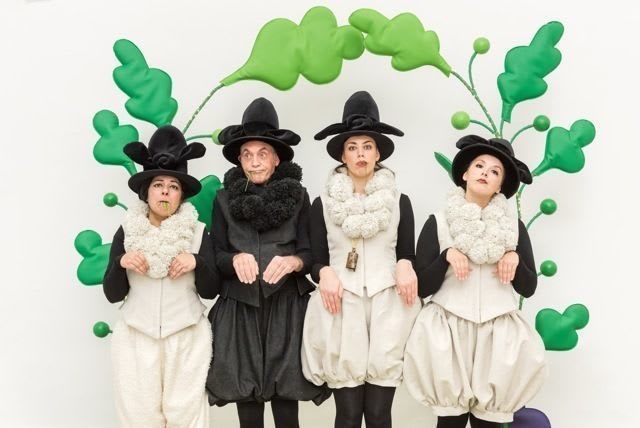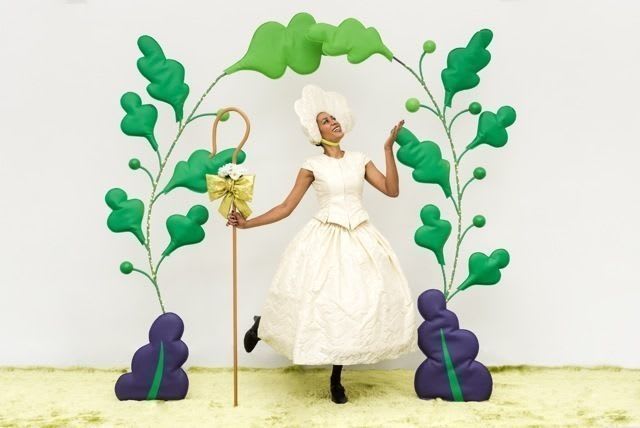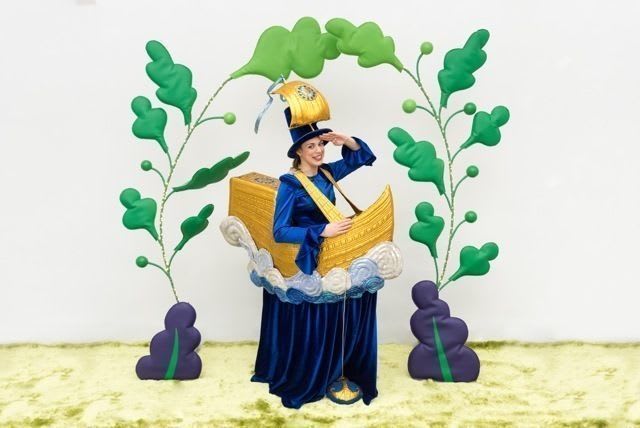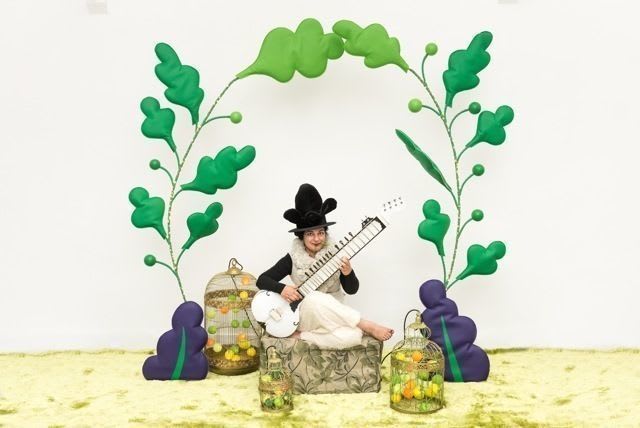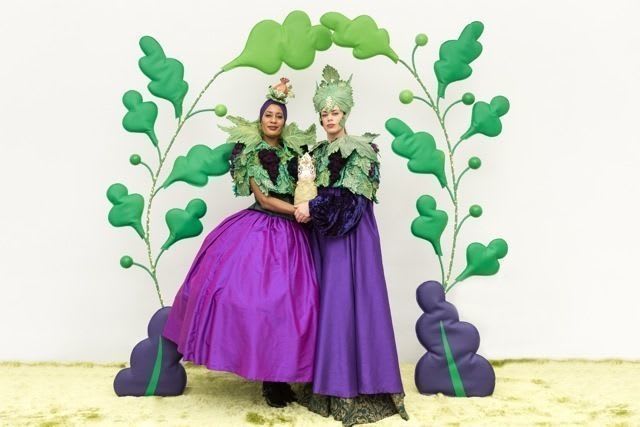A Royal Shakespeare Company commission, premièred in a production by Tim Webb in 2012, this immersive 55-minute show aimed at 3- to 5-year-olds is revived with a largely new cast and directed by Patrick Lynch. It takes its inspiration from the second half of Shakespeare’s The Winter’s Tale but, though it echoes some of that story and its costumes have a Jacobean style, it's a cleverly crafted original, not watered-down Shakespeare.
The audience first meets shepherdess Baabara and her sheep and is invited to join the flock. Baabara looks how you’d imagine Bo Peep, with a crook and a bonnet that frames her head with petals. The sheep have human faces and can walk on two legs, actors with wool bobbles on their clothes and round their necks, their ears stick out sideways through their hats and mark them out as sheep.
The audience can be sheep too: there are stick-out ears on headbands for them too. If they start baaa…ing the transformation is completed.
When everyone is settled in and feeling part of things, the flock moves through to where the sheep-shearing party is due to take place. There is a song and, beneath arching, large-leaved plant forms, they find long grass-covered tables facing each other across a space. There are benches behind them for the children (and a row of chairs behind them for parents and carers).
When all in place, there is a shower of red petals that falls over everything. This is just one of a series of sensory surprises. There are the flowers and herbs of the meadow are offered for the young “flock” to sniff at and find different scents.
“What do you like best about being a sheep?” asks Baabara and one them says, “ringing my sheep bell.” Someone else says, “the wind in my face.” Then those large plant leaves are waved in the air to stir up a breeze and send petals flurrying, some people start blowing too. There is a rattling tube that’s a wind machine that makes a storm sound—the gale is so strong it blows the black sheep over.
Someone announces it is time for the Sheep Dip but we don’t all have to parade through a trough of sheep medicine. Instead, it comes in the form of bubbles: blown bubbles that build up a column on hands that you can then throw about or clusters of bubbles to float through the air.
Sheep-shearing next. Baabara explains that the sheep get a haircut when it gets hot in summer and the shears are got out hovering around bobbles and removing layers, skirts end up cast off and a layer of wool builds up in a basket. After the shearing, the original sheep are left in Jacobean-looking breeches that go with their hats and tunics.
The wool isn’t wasted. It gets made into things. Someone has been busy knitting some very thick wool into long scarves and a beanie that is topped by a big pompom.
Now it’s bedtime, fleece mats are brought out to another song and the little ones can curl up for a nap as the song turns into a lullaby while any grown-ups can rest their heads on the tables.
The nap doesn’t last long for someone has found a parcel. But what is in it? A baby! A baby girl with a head made out of turnip. A sheep picks it up and holds it upside down. How do you hold a baby? The tiniest girl in the audience knows; she soon has her in her arms and is rocking her. Now a big sheep takes over but baby starts crying. Why? The audience flock comes up with suggestions and each is tried out until someone suggests she might want to go home. There’s a clue found now in the wrappings, a crown and it fits her head. Where do princesses live?
It is back-to-seats time or, there is a warning, you might get wet, for next a mariner arrives in a gold boat who can take the Princess baby back to the country where she lives in a castle. “Ahoy, there!” everyone says to the mariner as he drops anchor with a splash. But not everyone can accompany the Princess home; the Black Sheep is delegated to take her.
Now the turf covering the tables is removed to reveal channels of water. What’s this? Seaweed; smell it! Look down into the water: there are shells and more seaweed but something is missing. That’s right: fish—but here they are tiny carrot fish that can be swum though the water or sometimes splash up out of it. There’s a cloud. It gets darker, there is lightning and waves but the castle is in sight. There’s a golden dome and cages with coloured lights inside and fairy lights along tree branches and the sea has been covered again with brocade to present tables laid out for a banquet.
Just like The Winter’s Tale there’s a happy ending. A distraught King with a statue of his dead Queen that miraculously comes back to life and a family reunited. Clare de Loon has outdone herself with her designs for the royal costumes, which look straight out of an Inigo Jones masque, and the gold boat on its shimmering waves is fantastic. There is lovely music played live on sitar by Sheema Mukherjee with a recorded backing track that sometimes seems to echo some early seventeenth century tunes.
It is a show full of visual, aural and contact experience, as delightful for accompanying adults as for its target audience, but, like all Oily Cart performances, is guided by careful observation of audience members to approach them in a way that is welcome and sensitive to individual responses.
Oily Cart specializes in work with those with disabilities, especially those with learning problems or on the autistic spectrum, and, though this show is made especially for them, some performances will be designated “relaxed” performances and more suitable for such children.
After Arts Depot In a Pickle will tour to Clwyd Theatr, Mold, 10-21 January; Stratford Circus, London, 27 & 28 January; Warwick Arts Centre, 1-5 February; Gulbenkian, Canterbury 8-12 February and then in the USA Brooklyn Academy of Music, 18-30 April; Lincoln Center, New York City, 3-14 May and Denver Center for the Performing Arts, 19-26 May 2017.
